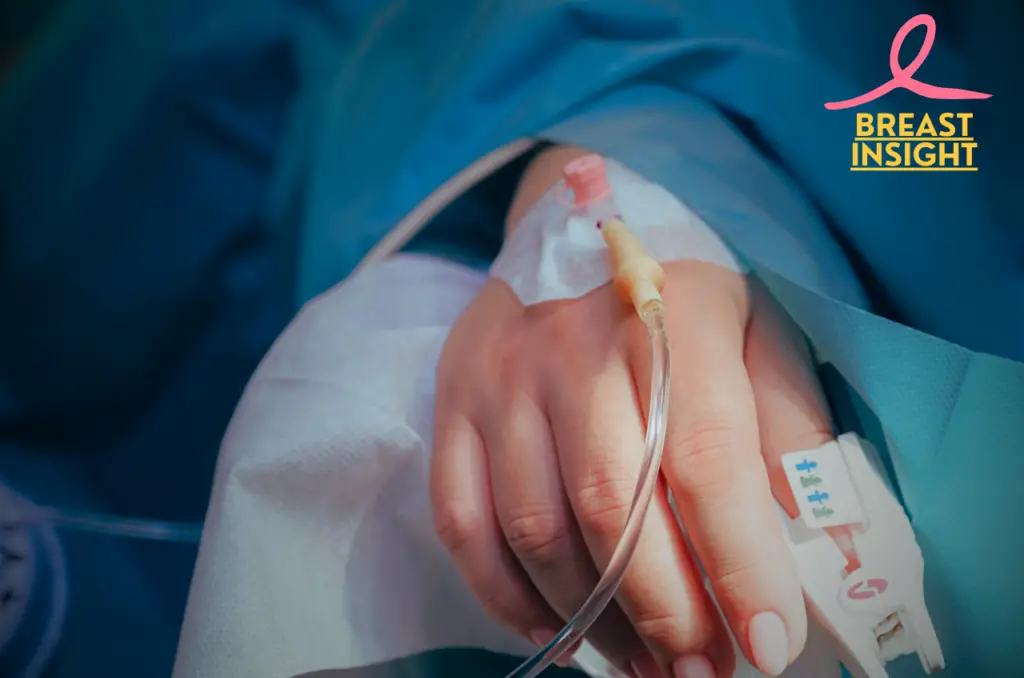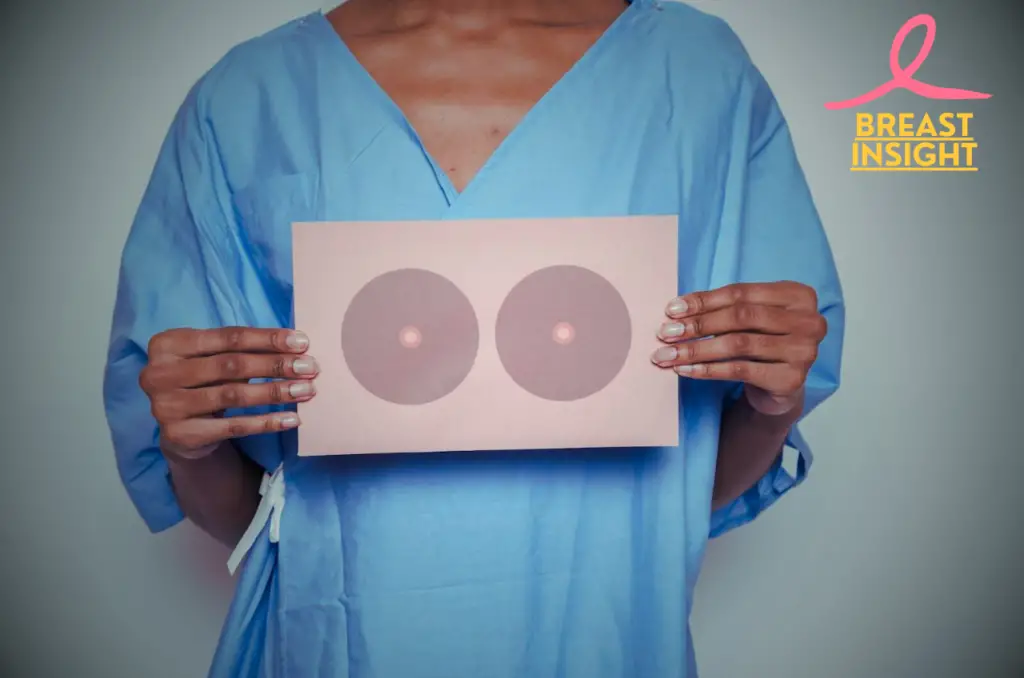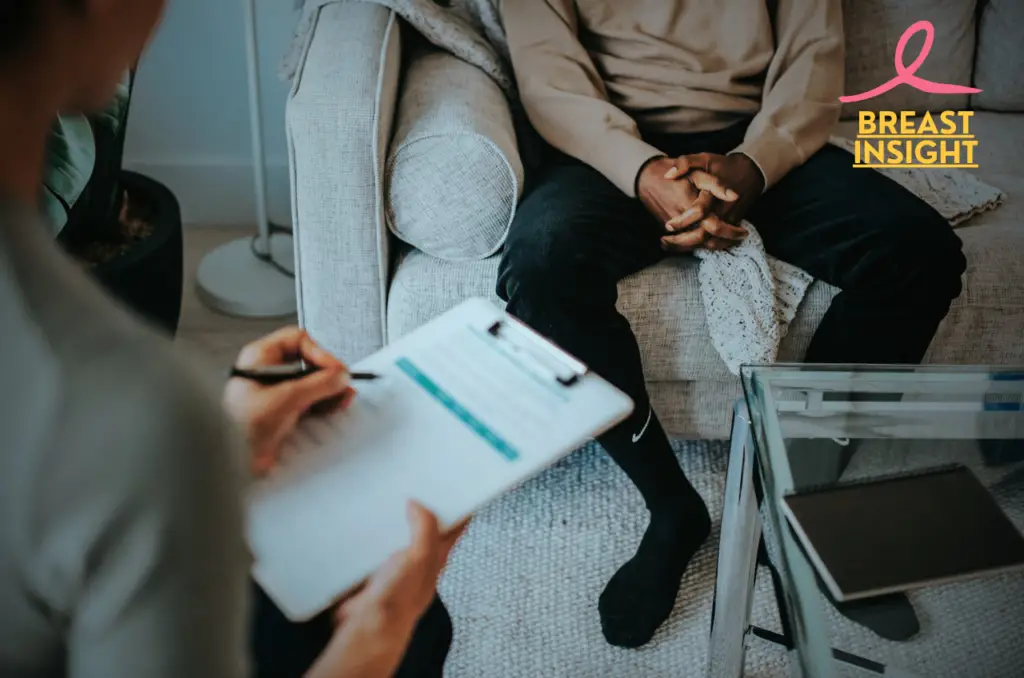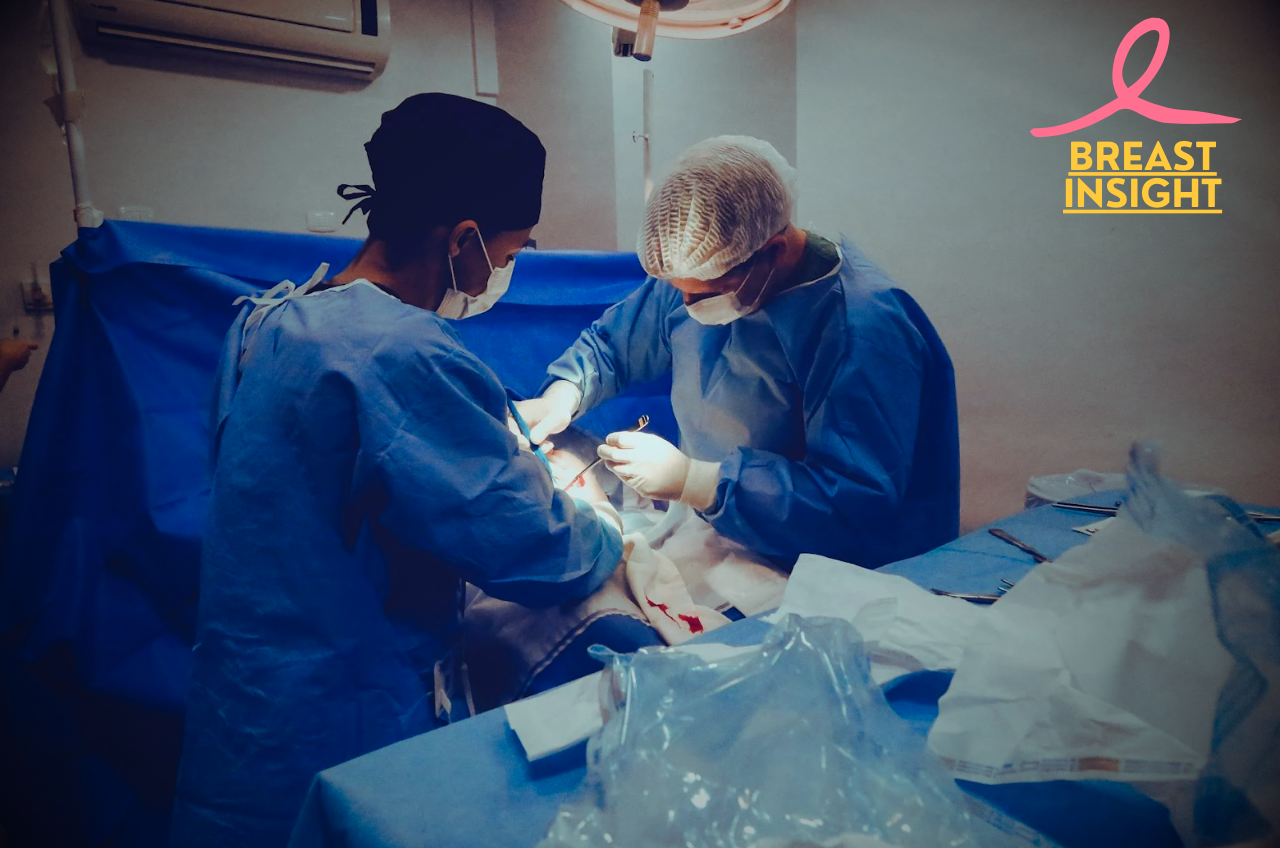Ever have felt a lump in your breast and freaked out? You are most definitely not alone. Each year, thousands of women go through that same feeling. Most lumps in the breast are harmless, but only a biopsy can really confirm that.
So, what does “breast biopsy” really mean to most of us? Painful procedures and those nerve-wracking test results. However, knowing what to expect is going to calm down a lot of scary thoughts. In fact, many women go through that whole process toward getting a final diagnosis, where knowledge can totally be like a powerful weapon-from the first signs to the last results.
If you’re wondering about the broader context of breast health, including causes, symptoms, and treatment options, check out our comprehensive guide on breast cancer causes and symptoms.
In this step-by-step guide, we’re breaking everything you need to know regarding breast biopsies into a comprehensible summary of the procedure, preparation methods, what happens during the biopsy process, how to interpret results, and coping with emotions attached to this process. So take your deep breath and let’s have an easier understanding about that breast biopsy process.

Understanding Breast Biopsy
Definition and Purpose
A breast biopsy is a procedure in which the doctor removes a small portion of breast tissue to view it under a microscope. The key aim of a breast biopsy is to diagnose whether a suspicious area in the breast is cancerous or not. It is a highly important procedure to detect and diagnose breast cancer in its early stages, allowing doctors to select the appropriate treatments.
Types of Breast Biopsies
However, there are varying classes of breast biopsies, each suited for different situations.
- Fine-needle aspiration (FNA) biopsy
- Core needle biopsy
- Stereotactic biopsy
- Ultrasound-guided biopsy
- MRI-guided biopsy
- Surgical (open) biopsy
| Biopsy Type | Description | Best Used For |
| Fine-needle aspiration | Uses a thin needle to extract fluid or cells | Small, palpable lumps |
| Core needle biopsy | Removes small cylinders of tissue using a hollow needle | Solid masses |
| Stereotactic biopsy | Uses mammogram imaging to guide the needle | Calcifications or non-palpable abnormalities |
| Ultrasound-guided biopsy | Uses ultrasound imaging to guide the needle | Visible abnormalities on ultrasound |
| MRI-guided biopsy | Uses MRI imaging to guide the needle | Abnormalities only visible on MRI |
| Surgical biopsy | Removes part or all of the suspicious area surgically | When other methods are inconclusive |
To learn more about the advanced imaging techniques used in biopsies, such as MRI-guided biopsies, and the benefits they offer, explore our detailed guide on breast MRI insights and limitations.
When a Breast Biopsy is Recommended
All these may prompt a physician to recommend a breast biopsy:
- A lump or mass is discovered during a self-exam or clinical breast exam
- A mammogram, ultrasound, or MRI detected a strange area
- There are changes in the nipple, such as discharge or retraction
- Skin changes on the breast include redness, scaling, or dimpling
Not all strange findings require a biopsy. Your doctor will take into account, for example, your history and other risk factors, as well as details of the abnormality in recommending a biopsy.
Benefits of Early Detection
The many advantages of finding breast cancer early through tests like breast biopsies include.
- Increased chances of survival: Breast cancer is detected early in which a proper cure can be easily facilitated, and therefore life may be prolonged
- Fewer aggressive treatment options: Early-stage breast cancers often require less surgery and may not require chemotherapy
- Better quality of life: Early detection of cancer may result in less aggressive treatments that may preserve more breast tissue and reduce side effects
- Inner peace: It would decrease your anxiety if a biopsy had benign results
- Personalized treatment plans: Biopsy results help doctors customize treatment methods based on the specific traits of the cancers
Knowing how important the breast biopsies are and that they aid in early discovery helps patients to make informed choices about their breast health. Checking in regularly and taking action when some results concern will be vital for ensuring healthy breasts and possibly identifying early issues.

Preparing for a Breast Biopsy
Once a decision about undergoing a breast biopsy is finalized, we must discuss proper preparation techniques. The experience for those would be less agonizing as results will be more reliable.
A. Initial visit to your doctor’s office
Your journey will begin with an initial appointment with your healthcare provider. In this appointment, your doctor will:
- Explain the reason for the biopsy
- Talk about the kind of biopsy you will have
- Check your history of illness and all medications
- Talk about any worries or questions you might have
This meeting should be candid and open. A list of questions may come in handy; this is the right time, and all arrangements concerning procedure should be clarified.
B. Critical Medical Appraisals and Images
Typically, before conducting the biopsy, the doctor might ask for more tests to obtain more information about the problematic area. Included among these are:
| Test Type | Purpose |
| Mammogram | Provides detailed X-ray images of the breast |
| Ultrasound | Uses sound waves to create images of breast tissue |
| MRI | Offers highly detailed images using magnetic fields |
Mammograms, in particular, play a vital role in identifying abnormalities and guiding biopsies. To learn more about their importance in early detection and diagnosis, explore our guide on 5 facts about diagnostic mammograms and how they can save lives.
These tests help determine the definite site of the pathology and guide the biopsy process.
C. Drugs to be avoided before the procedure
Your doctor will advise you on some drugs you should avoid prior to the biopsy so that the complications will be minimal. Expected drugs to avoid include:
- Blood thinners (like warfarin and heparin)
- Aspirin and other nonsteroidal anti-inflammatory drugs (NSAIDs)
- Certain herbal supplements that may affect blood clotting
Always consult with your doctor before stopping or changing any medicines.
D. What to wear and bring to the biopsy End
On the day of your breast biopsy, please note the following:
- Wear loose-fitting comfortable clothing
- Choose a supportive bra that’s easy to remove and put back on
- Do not put perfume or deodorant or even powder on your chest
- Bring a list of your current medicines and any relevant medical records
- Bring along a friend or family member to support you
Remember to:
- Follow up any instruction a health provider gives you
- Eat a light meal before the procedure, unless otherwise instructed
- Arrive at the medical facility with plenty of time to spare
Doing these preparation steps will prepare you for your breast biopsy procedure. Good preparation will lessen worry and ensure that you are prepared for this important test. In the following part, we’ll dive into the details of the breast biopsy procedure itself and help you understand what you should expect during the test.

The Breast Biopsy Procedure
Step-by-step explanation of the process
A breast biopsy is an important test used to figure out what’s wrong with suspicious breast tissue. The usual process involves the following:
- Patient positioning and preparation
- Localization of the suspicious area
- Giving local anesthesia
- Collecting tissue samples
- Post-procedure care and bandaging
Different methods used (needle, surgical, etc.)
Many methods are used for breast biopsies, and each one has its own benefits and uses:
| Technique | Description | Best for |
| Fine Needle Aspiration (FNA) | Uses a thin needle to extract fluid or cells | Cysts or small lumps |
| Core Needle Biopsy | Removes small cylinders of tissue using a hollow needle | Solid masses |
| Stereotactic Biopsy | Uses mammography imaging to guide needle placement | Calcifications or non-palpable lesions |
| Ultrasound-Guided Biopsy | Uses ultrasound imaging to guide needle placement | Visible masses on ultrasound |
| Surgical (Open) Biopsy | Removes part or all of a lump through an incision | Large or hard-to-reach lesions |
For those undergoing an ultrasound-guided biopsy, it’s helpful to understand how breast ultrasounds work in detecting abnormalities. Explore our detailed guide on Breast Ultrasound: Facts, Basics to Breakthroughs to learn more about this non-invasive imaging tool and its role in breast health care.
Duration and Pain Control
The time taken for breast biopsy depends on the type of biopsy procedure used.
- Needle biopsies: 20-30 minutes
- Stereotactic biopsies: 30-60 minutes
- Surgical biopsies: 30-60 minutes
Most pain management involves
- Local anesthesia to numb the area
- Mild sedation for some procedures (optional)
- Over-the-counter pain medication for soreness after procedure
Possible dangers and problems
Breast biopsies are usually safe, but there are some possible risks:
- Bumps and swelling
- Infection (rare)
- Bleeding
- Changes in breast appearance
- False-negative results
Recovery period and post-treatment care
It often goes very quickly. Most people resume their usual activities by 24 hours after a breast biopsy. Post-procedure care involves:
- Use ice packs to reduce swelling
- Wearing a supportive bra
- Avoiding strenuous activities for 24-48 hours
- Clean and dry the biopsy area.
To best recover, it is vital to strictly follow your doctor’s specific instructions. For cases of extreme pain, significant bleeding, or signs of infection, call your doctor right away.
Having given an in-depth explanation of the breast biopsy procedure, we would discuss how to read biopsy results. This will inform a decision of what next to do about your breast health.

Interpreting Biopsy Results
Now that you have had a breast biopsy, it is time to understand the results for your next steps. Let’s look at what the biopsy results mean for you.
Understanding Pathology Reports
Pathology reports are lengthy papers that explain the results from your breast biopsy. These reports include vital information about the tissue sample.
- The kind of cells contained
- By their appearance, nature
- Any unusual conditions or symptoms of disease
To give you an idea what a pathology report contains, here’s a general list of the various parts.
| Report Section | Description |
| Patient Information | Your name, age, and other identifying details |
| Specimen Details | Type of biopsy and location of the sample |
| Gross Description | Visual appearance of the tissue sample |
| Microscopic Description | Cellular details observed under a microscope |
| Diagnosis | Overall conclusion based on the findings |
When to Expect Results
The waiting period for biopsy results can be anxiety-inducing, but knowing the usual timeframe helps to manage expectations:
- Initial treatment: 24-48 hours
- Pathologist examination: 1-3 days
- Additional tests, if needed; 3-7 days
- Preparing the final report: 1-2 days
Usually, you can expect to get your results in 3-10 days after the biopsy. But this might change based on how complicated the case is and the tests needed.
Possible Outcomes: Benign vs. Malignant
Breast biopsy results usually fall into two major categories:
Benign (noncancerous):
- Fibroadenoma
- Cysts
- Fibrocystic changes
- Papillomas
Carcinoma (malignant):
- Ductal carcinoma in situ (DCIS)
- Invasive ductal carcinoma
- Invasive lobular carcinoma
Although benign, your doctor will continue to monitor the result or carry more tests based on follow-ups to ensure he can keep improving your health after that.
Follow-up Appointments and Next Steps
After receiving your biopsy results, your healthcare provider will schedule a follow-up appointment to discuss the findings and determine the appropriate course of action. The next steps may include:
For good results:
- Regular check-ups by mammograms or ultrasounds
- Life styles in preventing breast cancer
- Medicine that can help control symptoms or lower risk
For bad outcomes:
- More imaging tests (MRI, PET scan)
- Meet cancer doctors and surgeons
- Developing a Personalized Treatment Plan
Remember, regardless of the outcome, your healthcare team is there to support you and guide you through the next steps in your breast health journey. For more insights into preventative care and the importance of timely screenings, explore our guide on 5 Breast Cancer Screenings: Early Detection Matters. Stay informed and proactive in your breast health journey to make empowered decisions for your future.

Coping with Breast Biopsy Anxiety
Common Emotional Responses
Having a breast biopsy can be an emotionally trying experience. It is normal to feel a mix of emotions, such as:
- Anxiety
- Fear
- Apprehension
- Stress
- Sadness
These are normal responses to the possibility of a breast cancer diagnosis. Acknowledging and recognizing these feelings is a crucial step in coping with breast biopsy anxiety.
Support Systems and Resources
Support systems are to be built upon when going through anxiety for a breast biopsy. Options to consider:
- Family and friends: Seek support through love and actual help needed
- Support groups: Other people could have had experiences
- Online forums or social networking sites: There are usually dedicated threads for breast health
- Professional guidance: Mental health professional knowledgeable about medical-related anxiety issues Relaxation Techniques
| Resource Type | Benefits |
| Personal Network | Immediate emotional support, practical help |
| Support Groups | Shared experiences, coping strategies |
| Online Communities | 24/7 access, diverse perspectives |
| Professional Counseling | Expert guidance, tailored coping techniques |
Relaxation Techniques
Relaxation techniques can reduce anxiety levels before and after a breast biopsy. Try the following:
- Deep breathing: Slow, controlled breathing to calm the nervous system
- Progressive muscle relaxation: Tensing and relaxing the muscle groups to release physical tension
- Guided imagery: Visualizing peaceful scenes to distract from anxious thoughts
- Meditation: Mindfulness techniques to remain present and not worry about the future
- Yoga: Combine gentle movement with breathing exercises to help the person relax
Communication with healthcare professionals
Communication with your healthcare provider is key to managing your breast biopsy anxiety. Here are some tips to communicate effectively:
- Prepare your questions ahead of time: You will write down your concerns to avoid forgetting during appointments.
- Be honest about your emotions: Share your fears with your doctor to get proper advice and information.
- Clarify terms: Do not be afraid to ask your health professional to explain confusing terminology.
- Clarify timeline expectations: Once one understands the process, this makes waiting easier to endure.
- Ask about resources: Get information from your provider concerning available support services and resources or educational materials.
You can deal with your anxiety when having a breast biopsy very well if you use those coping strategies. Remember, though, that feelings of anxiety are normal. Also, asking for help at all times shows strength, not weakness. So, just imagine getting through this potentially stressful experience feeling stronger and feeling much better about yourself.
If you’re looking for further inspiration on overcoming challenges and regaining control during tough times, explore our article on Conquering Metastatic Breast Cancer: 5 Steps. While the focus is different, it offers valuable insights into resilience and the importance of a positive mindset during health-related journeys.
Now that we’ve talked about how to deal with breast biopsy anxiety, you’re much better equipped to deal with the emotional side of this whole thing. Remember, though, that your mental health is as important as your physical health throughout all of this.

Conclusion
A breast biopsy is very important in determining breast cancer. If you understand what is happening, prepare properly, and know what to expect before, during, and after, you can approach this test with much more confidence. Just remember that although a biopsy may scare you a little, it is totally necessary in determining the best course of action for your breast health.
During this breast biopsy, you can discuss your concerns with your healthcare provider. They’re there to help, to answer questions, and to calm those nerves. Keep yourself in the know, lean on your family and friends, and remember, this is a good move for keeping your health in check.
Frequently Asked Questions (FAQs)
What should I expect during a breast biopsy?
The procedure is fast; it takes about 20 to 30 minutes, depending on what kind of biopsy it is. Local anesthesia is administered to numb the area and reduce pain. The healthcare provider will explain the procedure, which may use imaging methods, such as ultrasound or mammography, to find the problem area. You may feel a little pain and swelling that could last for no more than several days after the biopsy.
How long does it take to get breast biopsy results?
The time to return results of the breast biopsy is between several days to a week. In many cases, this time will differ according to the complexity of the sample and the laboratory workload in the pathology laboratory. Your healthcare provider can likely schedule a follow-up appointment to discuss the results in preparation for developing a course of action.
Are there risks associated with a breast biopsy?
Breast biopsies are mostly safe, but there are some risks, like bruising, swelling, and pain where the biopsy was done. Sometimes, rare problems can happen, such as infection or bleeding. To reduce these risks, it is important to follow your doctor’s instructions before and after the procedure, which may include not taking blood thinners.
Can I drive after a breast biopsy?
Yes, most patients can drive after a breast biopsy, especially if they used local anesthesia. However, if you receive sedation or feel a lot of pain, it is best to have someone drive you home. Always follow your doctor’s specific advice about what to do after the procedure.


1 thought on “Worried About Breast Biopsy? 6 Things You Should Know to Stay Calm and In Control”